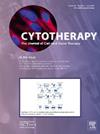Dark NKnight rising: a current perspective on NK cell and CAR-NK cell therapy
IF 3.2
3区 医学
Q2 BIOTECHNOLOGY & APPLIED MICROBIOLOGY
引用次数: 0
Abstract
Natural killer (NK) cell therapy began decades ago with administration of small doses of minimally-characterized cells known as cytokine-induced or lymphokine-activated killer cells (CIK or LAK, respectively). Methods and conditions that enabled the broad adoption of T cell therapies have often been less effective for NK cells, but in the last 15 years, new NK-specific advances in selection, differentiation, and ex vivo expansion hav e made possible the infusion of large doses of pure and potent NK cell products. Also, NK cells have been more resistant to the genetic modification approaches utilized for engineering T cells, but in the last 5 years several robust approaches for NK cell modification have advanced to the clinic. Thus, a tremendous surge in NK cell clinical trials has been seen recently. Here, we present a focused perspective on the key developments in NK cell therapy that differentiate it from T cell therapies and discuss areas that are key to their clinical and commercial success- both current advancements and hurdles that remain to be addressed.
Dark NKnight崛起:NK细胞和CAR-NK细胞治疗的最新进展。
自然杀伤(NK)细胞治疗开始于几十年前,使用小剂量的细胞因子诱导或淋巴因子激活的杀伤细胞(分别为CIK或LAK)。广泛采用T细胞疗法的方法和条件通常对NK细胞不太有效,但在过去的15年里,NK特异性的选择、分化和体外扩增方面的新进展使得大剂量的纯和强效NK细胞产品的输注成为可能。此外,NK细胞对用于工程T细胞的基因修饰方法具有更强的抵抗力,但在过去的5年里,几种强大的NK细胞修饰方法已经进入临床。因此,近年来NK细胞临床试验激增。在这里,我们将重点介绍NK细胞治疗与T细胞治疗的关键发展,并讨论其临床和商业成功的关键领域,包括目前的进展和有待解决的障碍。
本文章由计算机程序翻译,如有差异,请以英文原文为准。
求助全文
约1分钟内获得全文
求助全文
来源期刊

Cytotherapy
医学-生物工程与应用微生物
CiteScore
6.30
自引率
4.40%
发文量
683
审稿时长
49 days
期刊介绍:
The journal brings readers the latest developments in the fast moving field of cellular therapy in man. This includes cell therapy for cancer, immune disorders, inherited diseases, tissue repair and regenerative medicine. The journal covers the science, translational development and treatment with variety of cell types including hematopoietic stem cells, immune cells (dendritic cells, NK, cells, T cells, antigen presenting cells) mesenchymal stromal cells, adipose cells, nerve, muscle, vascular and endothelial cells, and induced pluripotential stem cells. We also welcome manuscripts on subcellular derivatives such as exosomes. A specific focus is on translational research that brings cell therapy to the clinic. Cytotherapy publishes original papers, reviews, position papers editorials, commentaries and letters to the editor. We welcome "Protocols in Cytotherapy" bringing standard operating procedure for production specific cell types for clinical use within the reach of the readership.
 求助内容:
求助内容: 应助结果提醒方式:
应助结果提醒方式:


